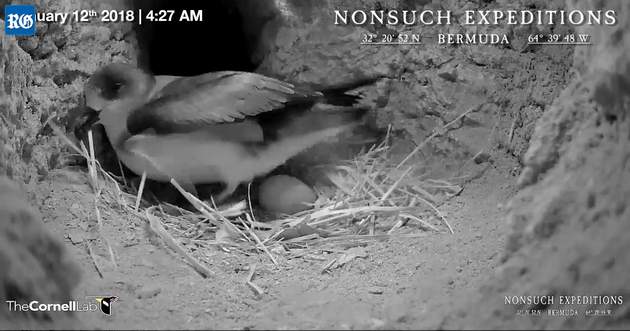Recent News
BIOS Scientist To Work With Ocean Tech ProjectFriday, August 05, 2016
A global marine research project designed to justify marine protected areas worldwide is set to launch in Bermuda next spring and will include the expertise of BIOS coral reef scientist Gretchen Goodbody-Gringley.
Daisy heads towards the Bahamas
Thursday, August 04, 2016
An endangered turtle rescued by fisherman off North Shore with a rusting hook caught in its trachea has left the island’s waters and is now swimming towards the Bahamas.
Subs exploring local waters
Sunday, July 31, 2016
Bermuda’s deep sea waters are being studied with submersibles by the international Nekton ocean exploration team, as part of Nekton’s XL Catlin Deep Ocean Survey.
Video: Nekton Mission’s First Submersible Dive
Tuesday, July 26, 2016
Nekton’s first deep ocean scientific research mission, which is sponsored by re/insurer XL Catlin and in partnership with the Bermuda Government’s Ministry of the Environment, launched off the coast of Bermuda this week, with the action caught on camera.
Ocean Scientific Research Mission To Launch
Tuesday, July 19, 2016
Nekton’s first deep ocean scientific research mission — sponsored by re/insurer XL Catlin and partnering with the Bermuda Government’s Ministry of the Environment — is preparing to launch off the coast of Bermuda this week.
About
GovernanceAbout Us
Newsletter
Latest News
Gift & Bookstore
Contact
General Inquiries
info@bzs.bm
Latest News
All the latest updates and news from the Bermuda Aquarium, Museum, and Zoo, one of Bermuda's leading visitor attractions!
Owain Johnston-Barnes
Published Jan 15, 2018 at 8:00 am (Updated Jan 15, 2018 at 12:20 am)

This year’s cahow breeding season could be a record breaker, experts predicted yesterday.
Two thirds of the 125 known breeding pairs were nursing eggs by Friday.
And viewers of the CahowCam — a livestream of a nest on breeding site Nonsuch Island — were able to watch one of the endangered birds lay its single egg early yesterday morning.
Jean-Pierre Rouja, team leader of conservation group Nonsuch Expeditions, said the egg was laid at about 4.30am and marked the start of the sixth CahowCam season.
Mr Rouja added that the Bermuda team had signed off at 3am, but their partners from US-based Cornell Lab of Ornithology, who are in Hawaii to install a similar camera to track albatrosses, tweeted the event and alerted Bermuda.
Mr Rouja said that last year, with the support of Cornell, the CahowCam reached 600,000 international viewers who watched a total of 8.5 million minutes of footage.
He added: “As we expand the project, including new ways for our viewers and students to engage, we expect to greatly exceed those numbers this season.”
The same pair of cahows has used the filmed nest since 2009.
Jeremy Maderios, government chief conservation officer, said the pair’s egg last year took 51 days to hatch. Male and female birds take turns to care for the egg.
Mr Madeiros said: “After a record-breaking nesting season last year with 61 chicks fledging out to sea, we seem to be on track for breaking even more records this year.”
The majority of incubating adult cahows he had examined were heavier than normal, with some male birds approaching 500 grams.
Mr Madeiros said that suggested the birds had found good feeding conditions north of the Gulf Stream over the last month.
To watch the livestream, visit Nonsuchisland.com.
Anyone interested in updates on the cahows can also sign up for the Nonsuch Expedition Newsletter and select the CahowCam alert option.


